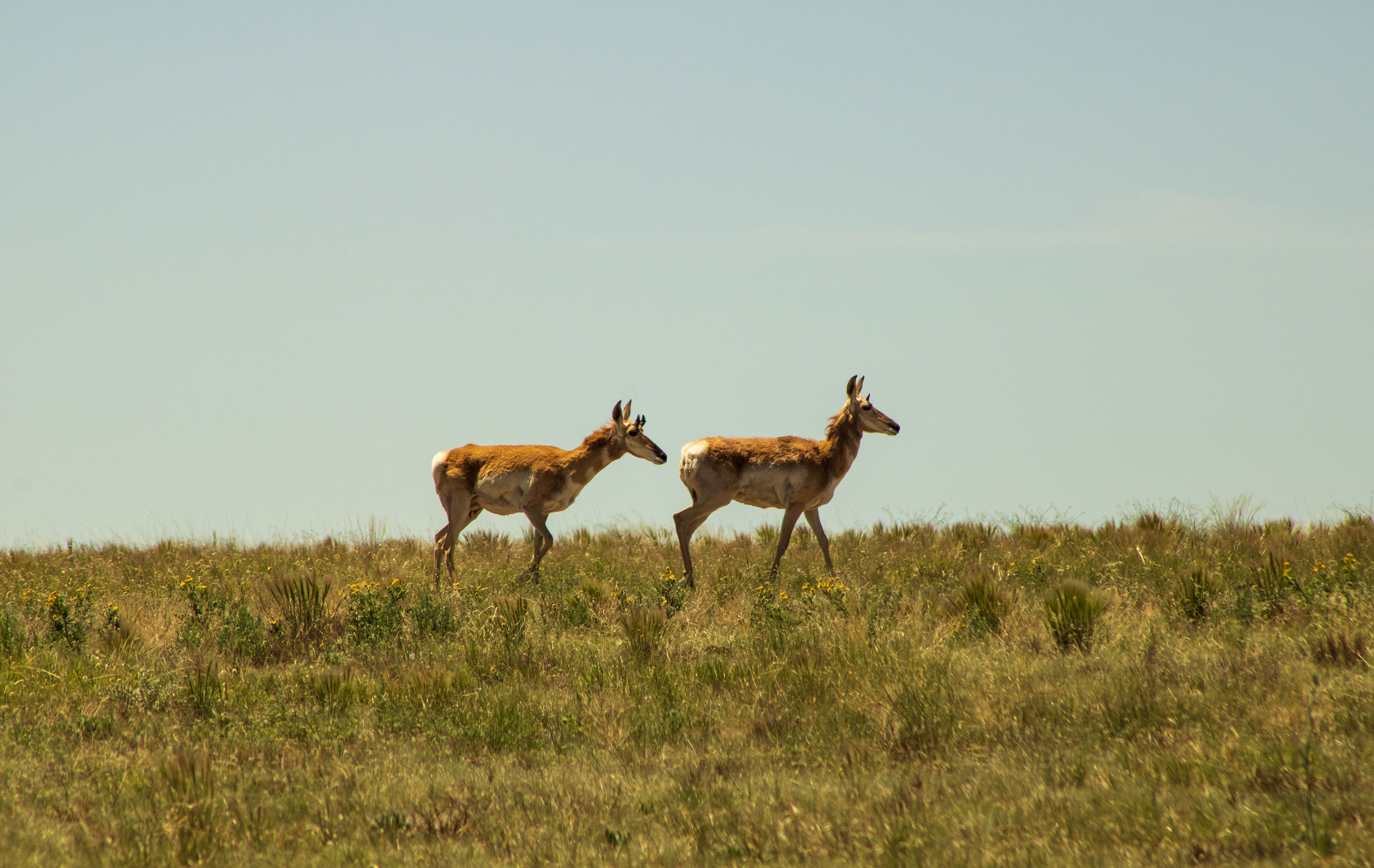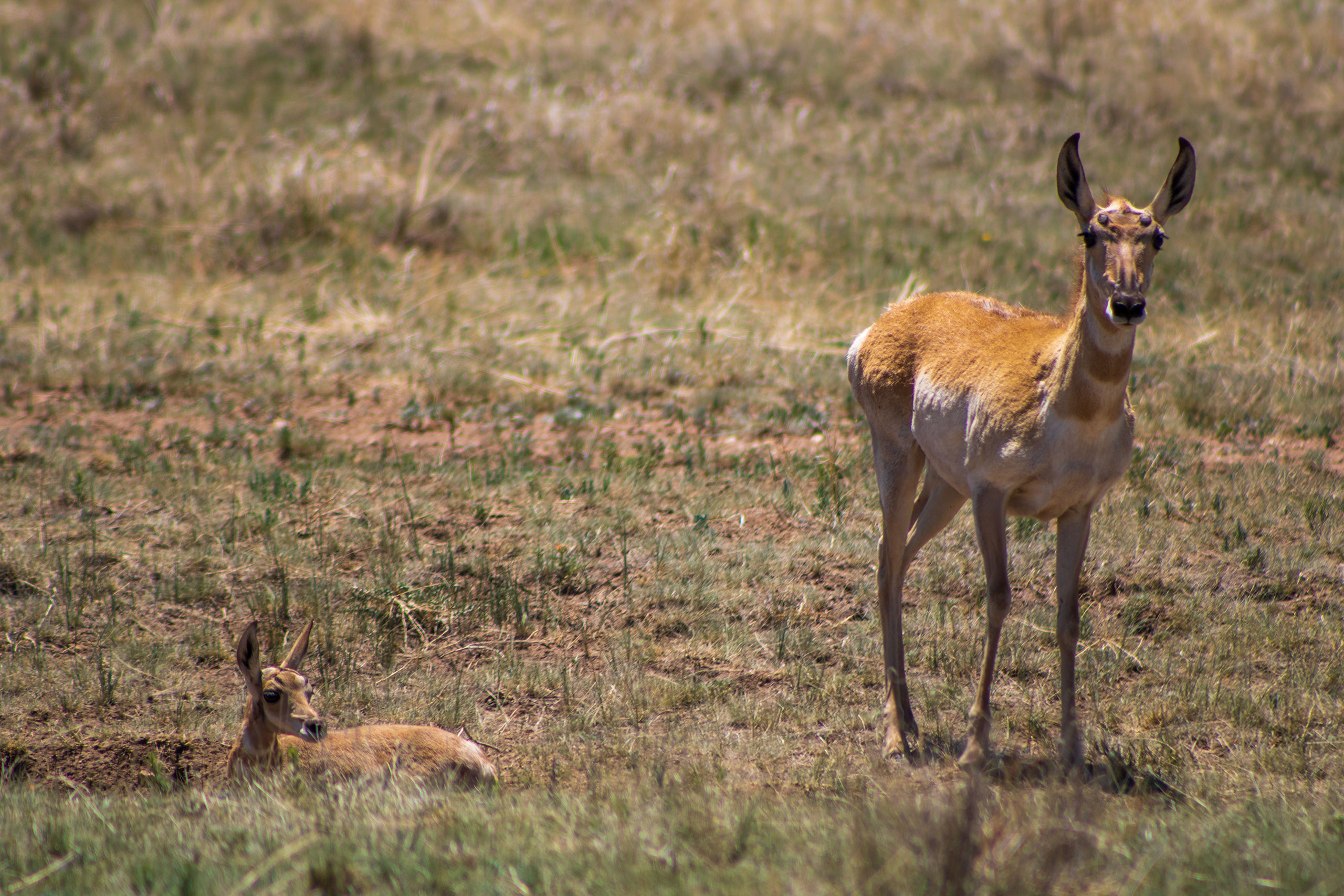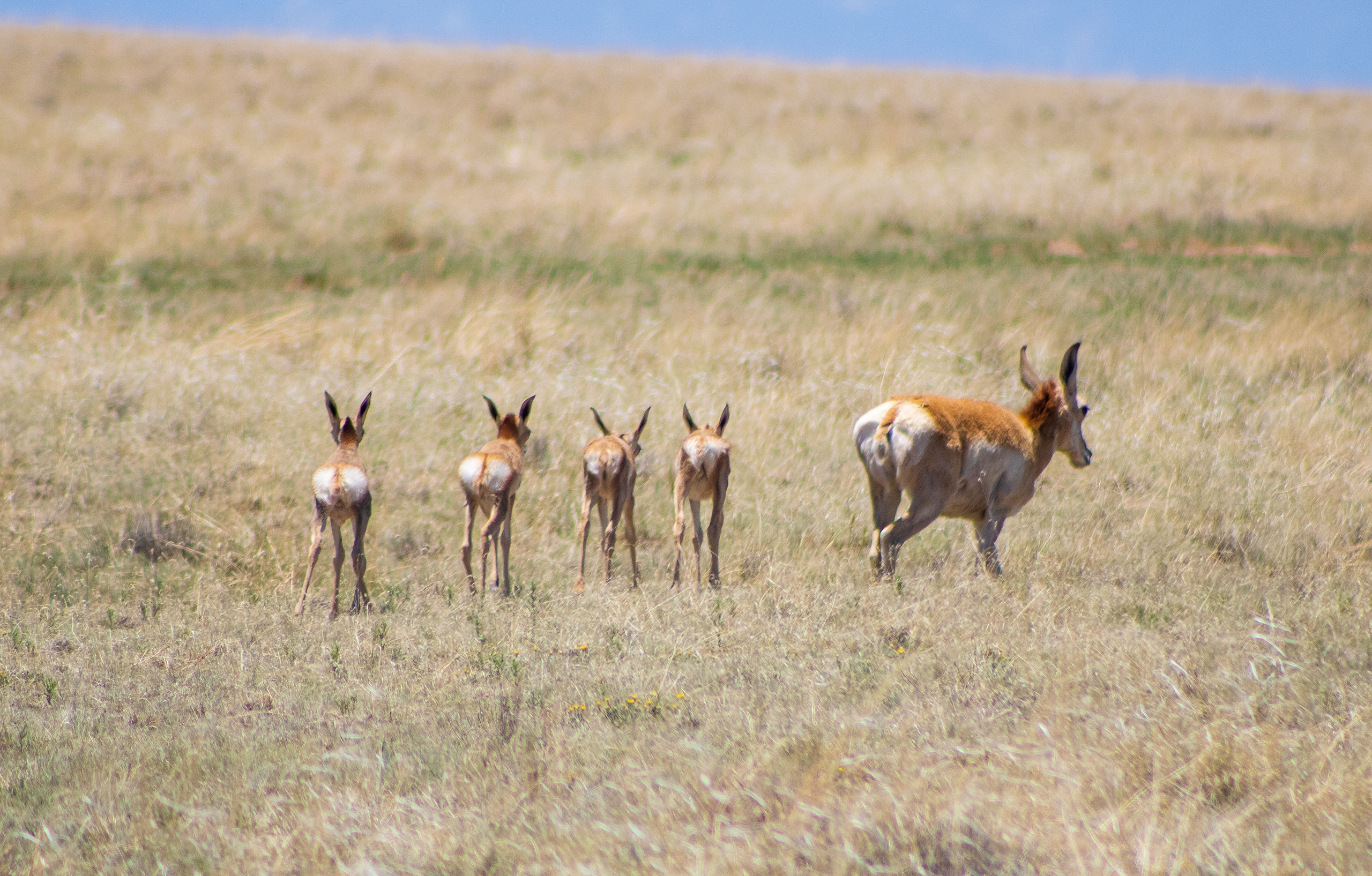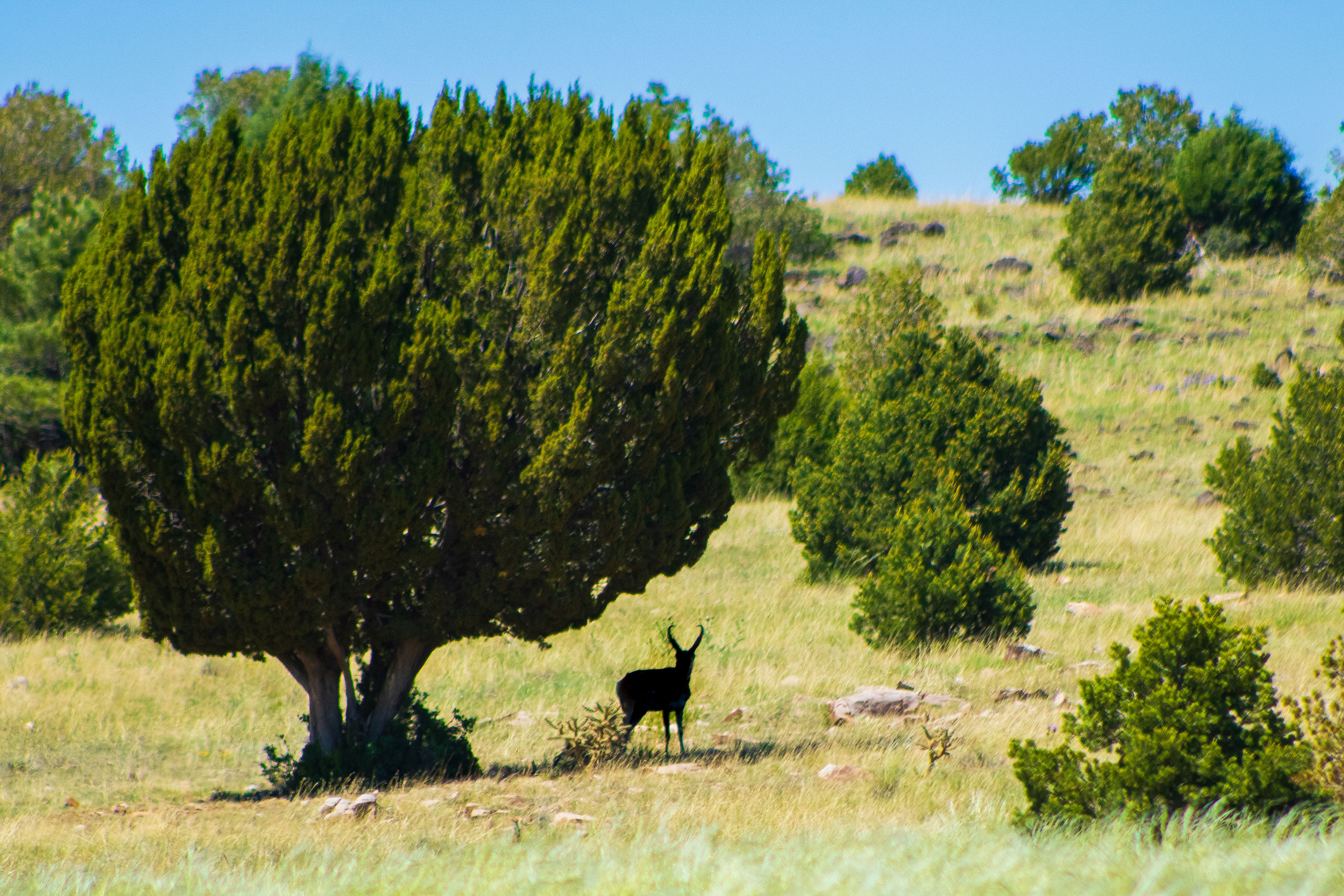Land Conservation and the Curious Pronghorn
Stephen Fowler’s Pronghorn Encounter
While out and about in the northeast grasslands of New Mexico, conducting the annual monitoring of the conservation easements we hold for some of the larger, conservation-minded ranchers in the area, our summer monitoring intern, Stephen Fowler, was fortunate to happen upon a herd of pronghorn. Stephen has a keen eye for wildlife and he wasted no time getting his camera out to bring us these images.
* * *
“Pronghorn are unique,” said Tony Opatz, the state pronghorn biologist with the New Mexico Department of Game and Fish (NMDGF). “They are curious creatures – they like to investigate things.”
Pronghorn can see as far as two miles and they are super water-efficient. “They can go three days without drinking any water, getting water through plants alone,” Tony explained.
Despite common reference, the pronghorn is not an antelope. In fact, the pronghorn’s most closely related living relative is the giraffe! Several species in the pronghorn family existed in North America, with fossils dating back to the late Oligocene, but the modern pronghorn, having evolved in the Pleistocene Epoch, is the only species that remains.

Strictly a North American species, pronghorn were abundant before the Homestead Act of 1864. Their numbers got as low as 12,000 in the early 1900s, but with regulation, pronghorn have been successful. Now, their numbers are up to around one million – and more than half of them are in Wyoming alone.
It is estimated that about 60% of New Mexico’s pronghorn population resides north of I-40 and east of I-25 along the interstate corridor roughly between Las Vegas, NM and Raton – an area that NMLC has had considerable success in working with landowners to conserve and protect. The northeast New Mexico grasslands, in fact, represent one of the largest remaining relics of shortgrass prairie in all of North America, home to countless species of grassland birds and waterfowl, and critical to maintaining the habitat and migratory corridors that many wildlife species, including pronghorn, depend on.
To date, NMLC has protected approximately 88,500 acres in this region of the state.

While pronghorn can be found in the southeastern part of New Mexico, there they run into mesquite and piñon juniper terrain which enables coyotes, their main predator, to stalk them. Also, the rain gradient goes down significantly below I-40, resulting in fewer forbs, and “there used to be a lot of sheep ranchers down that way, so there’s a lot of remnant [net-wire] fencing still in place which can pose a problem for pronghorn movement,” Tony said.
Unlike mule deer, pronghorn have a hard time jumping over fences. “Their legs – the muscle groups, etc. – are designed strictly for speed, not for jumping” Tony said, “and jumping is a learned behavior [not instinctive] so, it’s rare to see them go over fences.” Instead, they usually go under fences.
For landowners and ranchers looking to improve habitat for pronghorn, a barbless, bottom fence wire at least 18 inches above ground is recommended to allow easier clearance for pronghorn to pass under.

Pronghorn often move around seasonally and while some tend to stay in a general area much of the time, some populations of pronghorn, in Wyoming for example, undergo the second largest migration of any species in North America. “In the winter, they group up, like elk do, into larger herds of 200-500 animals and they pretty much go where they know there’s food,” Tony said. “They can travel about twelve miles in just a few hours if they want to,” he added.
For species like pronghorn, a large, unfragmented land area, free from human disturbance is critical for breeding success and survival. That’s one reason why increasing land connectivity – conserving properties near or adjacent to other protected lands such as the Rio Mora National Wildlife Refuge in northeastern New Mexico – is a major focus of NMLC’s land conservation work.
Epilogue
After concluding the easement monitoring on a large ranch near Watrous in northeastern New Mexico, Stephen was driving home, when he spotted a pronghorn with its leg caught in the top wire of a fence. Stephen pulled over, and fortunately, the NMLC truck toolbox contained a pair of wire cutters. Moving very slowly, Stephen approached the animal. “It let me get close and remained calm enough for me to cut the wire,” Stephen said. Once freed, it ran off. “It seemed okay, from what I could tell,” he added. That’s an experience Stephen will remember long after his internship with NMLC is over!
P.S. While Stephen did not have the tools on hand to repair the top wire, as soon as he could, he informed the landowner, and provided the site’s GPS coordinates, so the fence wire could be mended properly.


